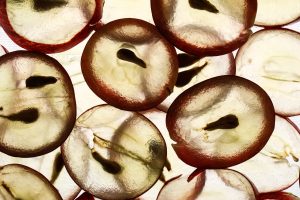Regardless of the sensory style of the wine (thiols, tropical fruits, amylic, white-fleshed fruits, floral, citrussy, etc.), one of the main objectives when crafting white or rosé wines is attaining a high level of aromatic intensity.
The intensity of aromas is perhaps the predominant parameter in the assessment of a wine, as 70-80% of its perceived quality is linked to smell, therefore the bouquet is a crucial factor to take into account when it comes to market positioning.
Stabulation (macération sur bourbes) involves leaving the must on its lees for a number of days, then the must is fined as usual before alcoholic fermentation.
The stabulation process concentrates on the aromatic potential still to be enhanced after partial clarification of the must and is based on the transfer of compounds and/or aroma precursors from the lees to the must, being careful not to push the process beyond the limit (if this happens, it could lead to the transfer of unwanted notes, such as vegetal or sulphurous ones).
Which parameters do I need to take into account for optimal stabulation?
To use this technique, just about all the crucial winemaking parameters have to be perfectly under control, on the one hand to avoid the risk of uncontrolled fermentation and on the other to facilitate the extraction of the maximum aromatic potential.
The musts and lees intended for stabulation need to be in an optimal state (beware of the possibility of copper being found, which could lead to oxidation during alcoholic fermentation) and the must needs to be kept at a low temperature (under 8°C). The process can last between 5 and 14 days. It’s vital to avoid oxidation and to keep stirring up the lees throughout.
Protecting the must from oxygen is a crucial factor. This can be achieved by using CO₂ or N₂, making the top of the tank and the pumping circuit inert and/or keeping up a level of free SO2 between 20 and 30mg/l (in the event of using the IOC Calypso™ yeast, the ideal quantity of free SO2 is <15mg/l). These conditions need to be maintained throughout the whole stabulation process (from the end of pressing up to the day before fining). The coarsest parts of the lees (inorganic residue or fragments of skins, seeds, etc.) always need to be removed before beginning.
The lees can be stirred up using any available means, as long as you avoid dissolving oxygen in the must. We highly recommend stirring up the lees at least once a day. When you are satisfied that you’ve attained your desired sensory result, it’s time to halt the process, wait for 24 hours, then fine the must.
When it comes to stabulation, the most important parameter is temperature: low-temperature stabulation lasting for many days is not the same thing as high-temperature stabulation lasting only a few days. The stabulation process should always be halted as soon as the desired sensory result has been achieved (find out by tasting the must).
The Perdomini-IOC protocol for the cold-stabulation process
Grape management
Carefully assess the health of the grapes.
Soft press the grapes and add the enzyme and a dedicated antioxidant (SO2 or tannin) to the juice as it comes out of the press. |
|
|
|
|
Must management
After 10-12 hours, remove the coarsest parts of the lees and add the IOC CalypsoTM yeast (see rehydration).
Leave for 5-7 days at a temperature of 6°C, stirring up the lees once a day
Must management
Add a composite fining agent to clean up the must, wait for 24h, then transfer to the fermentation tank (make sure the must is at the right temperature when you inoculate the yeast). |
|
|
|
|
*Why use enzymes on the grapes?
The use of enzymes such as Eno&Zymes AromPress on the grapes allows both selective extraction and the depectinisation of the must.
Alternatively, you can use a low dosage on the grapes, followed by a second dose 4 days after starting stabulation, or even use the enzyme Eno&Zymes ProcessExtreme on the juice as it comes out of the press.

|
|
**How can I reduce SO2 levels in the must?
The residual levels of total SO2 are very often high (to limit the use of SO2, , see the use of the non-Saccharomyces, non-fermenting and O2-consuming yeast).
Using IOC Calypso™ leads to a big reduction in the use of SO2, which in turn allows the winemaker to get on with alcoholic fermentation without an overly long lag phase.
|
|
|
Technical tips for alcoholic fermentation
|
|
Alcoholic fermentation
In the fermentation tank, increase the temperature and inoculate the previously rehydrated yeast.
In order to draw out the full aromatic potential of the wine, we recommend:
- Using a protector specially designed for yeast rehydration.
- Checking the YAN levels to establish the best yeast-nutrition protocol.
- Adding organic nutrition at the beginning of alcoholic fermentation, as this facilitates the expression of specific notes
- Using glutathione-rich yeast derivatives, as this encourages the expression of varietal aromas.
|
|
|
|
Want to know more? Contact the Perdomini-IOC technical staff or the area agent closest to you
to get a consultation and practical demonstration in your winery!













